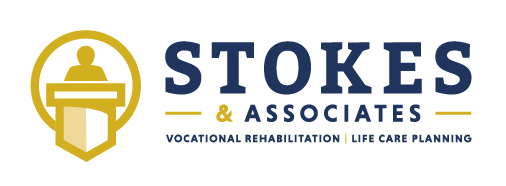What’s the going rate of pay? Using government statistics to evaluate earning capacity.
When performing a vocational analysis of an individual’s potential lost earnings, it’s important to rely on reliable and trustworthy data to compare the pre-injury to the post-injury earning capacity. Whereas tax information or pay stubs are useful in describing an individual’s actual or demonstrated earnings, government statistical wages offer a broader picture of expected earnings collected over a wider sample size. The Bureau of Labor Statistics (BLS) and the U.S. Department of Labor collect troves of useful information regarding specific occupations and the “going rate” of pay.
One of the most useful datasets is the Occupational Employment Statistics (OES) survey. The OES is a semi-annual survey of cross-industry occupational employment and wage estimates for the nation; over 650 areas, including states and the District of Columbia, metropolitan statistical areas (MSAs). The OES estimates are constructed from a sample of about 1.2 million establishments who are surveyed by mail, through the Internet, and via personal visit. Wages for the OES survey are straight-time, gross pay, exclusive of premium pay and are reported for MSAs, by state, or at the national level. Statistical algorithms are applied to impute the 10th, 25th, 50th, 75th, and 90th percentiles. These levels are often used to determine what the typical worker would earn given increasing levels of experience.
The OES occupations are listed according to Standard Occupational Classification (SOC) system. The (SOC) is used by Federal agencies to classify workers into occupational categories for the purpose of collecting, calculating, or disseminating data. All workers are sorted into one of 840 specific occupations according to their occupational definition. In order to classify jobs, detailed occupations are combined to form 461 broad occupations, 97 minor groups, and 23 major groups. Detailed occupations in the SOC with similar job duties, and in some cases skills, education, and/or training, are grouped together.
Given the injured worker’s job title (and SOC code) and geographic location, we can estimate what the wage ranges for that occupation are. With that information, we can compare the claimant’s actual earnings with average earnings reported for their MSA and determine if they were earning above, below, or roughly in line with industry standards. Wage information for alternate jobs given the claimant’s ongoing physical restrictions can be compared with pre-injury wage information to arrive at the estimated lost earning capacity.
Not all jobs or occupations fit neatly into the pre-determined classifications used by the government to collect data. In these instances, we consult professional trade organizations or other state and local groups who collect more granular information on these occupations. To learn more about how the vocational experts at Stokes & Associates, Inc. use published data and other sources to arrive at our opinions, contact us for a complimentary consultation.
To schedule a complimentary consultation, please call David Barrett at 504-454-5009, visit our website, www.stokes-associates.com or email dbarrett@stokes-associates.com.
Larry S. Stokes, Ph.D.
Aaron Wolfson, Ph.D.
Lacy Sapp, MHS, CRC, LPC, LRC, CLCP
Todd Capielano, M.Ed., LRC, CRC, LPC, CLCP
